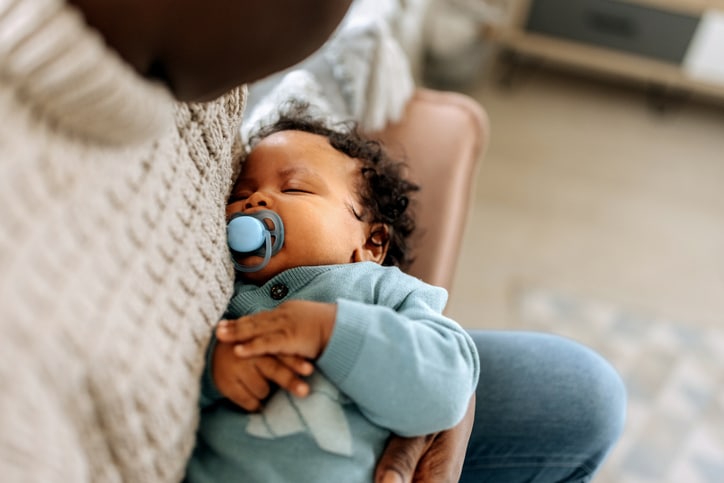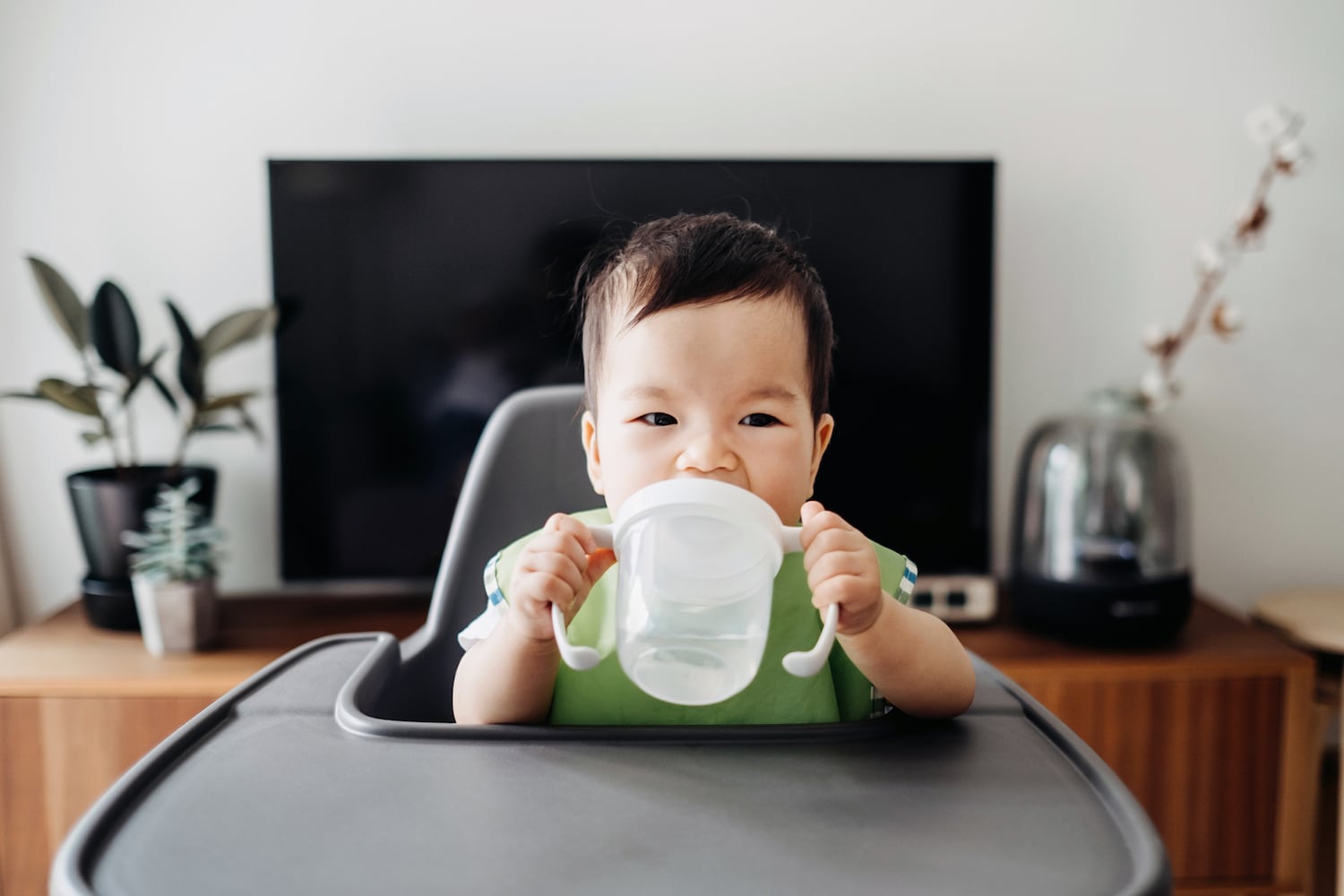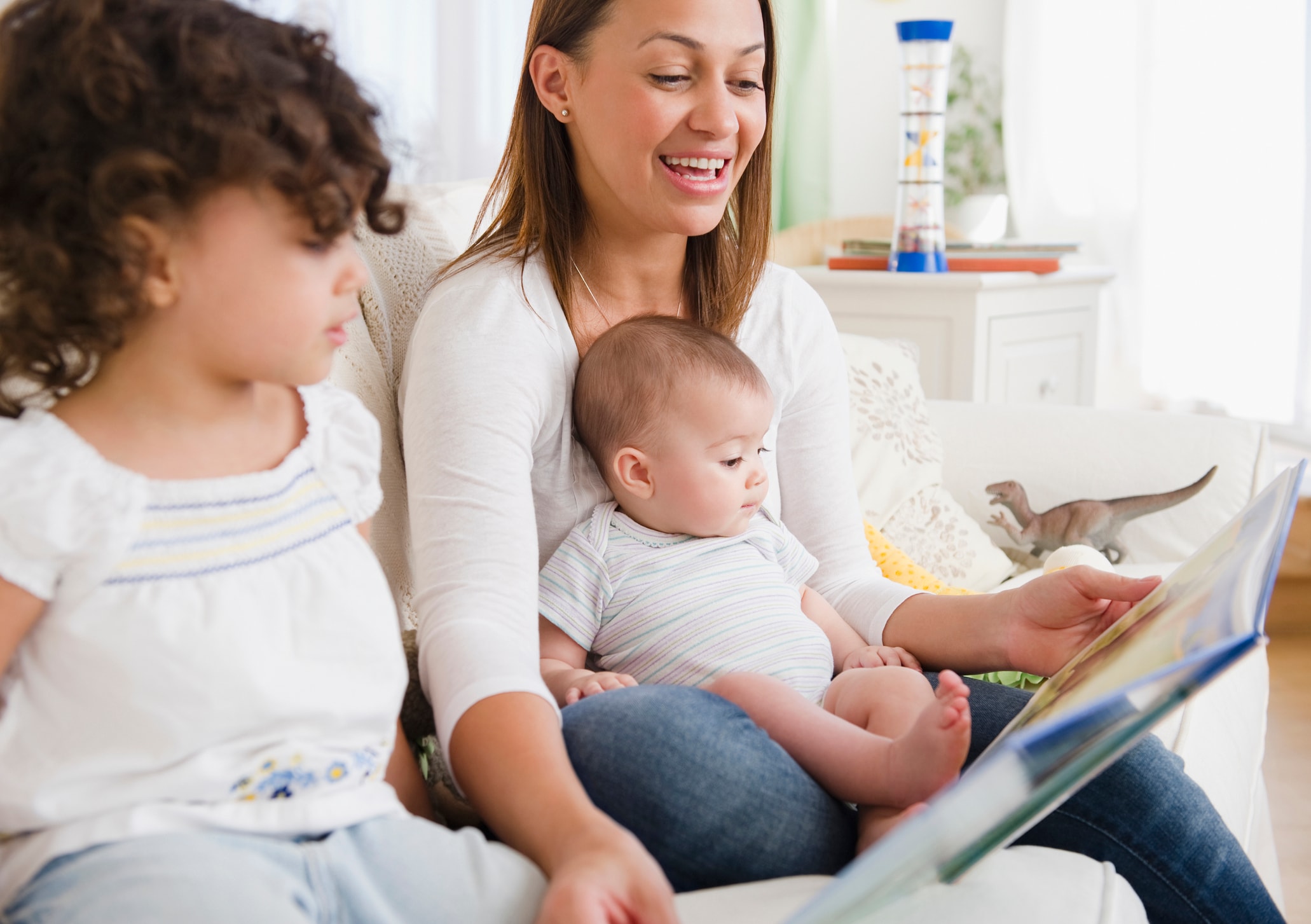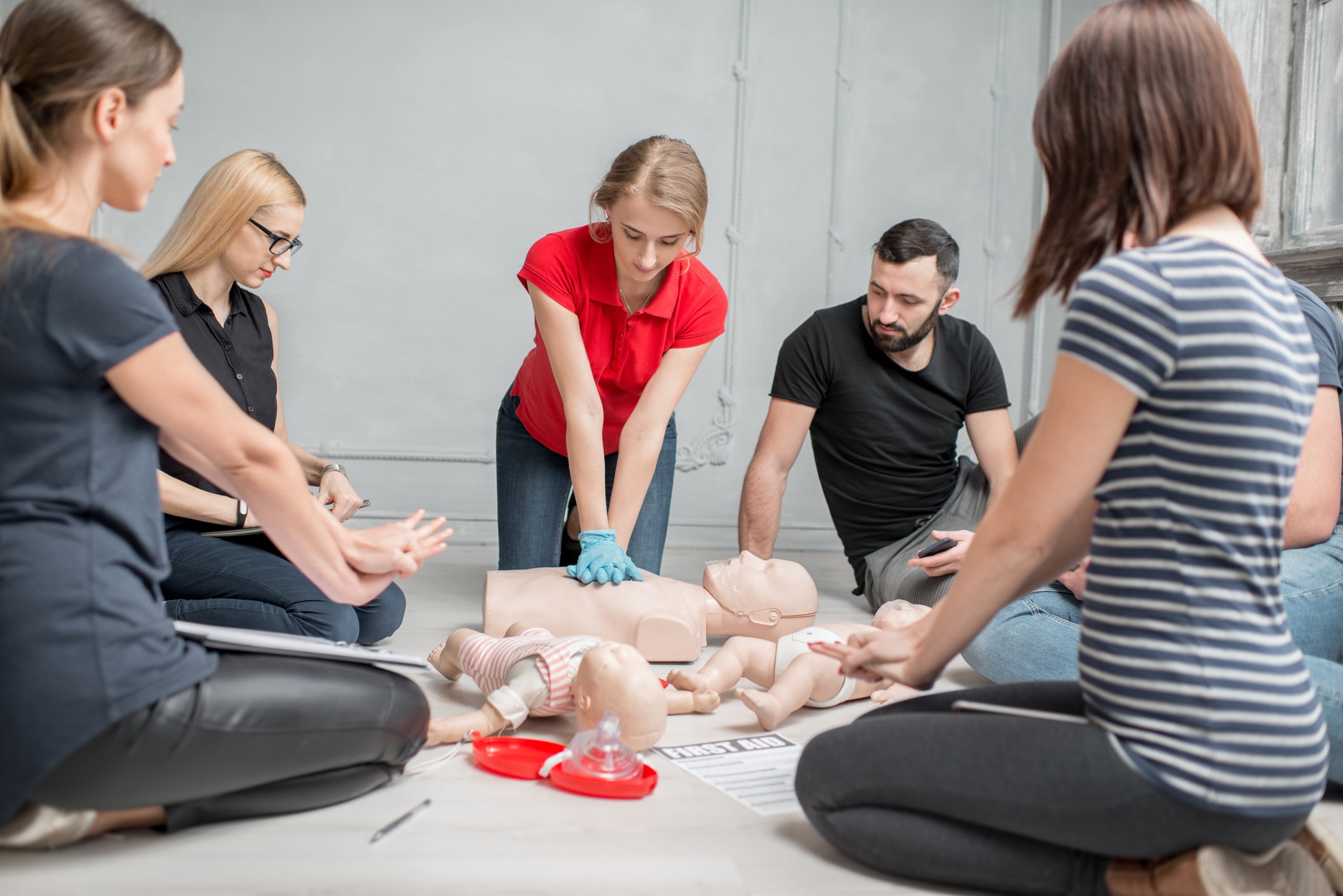One rule every infant caregiver likely knows is that it’s safest for babies to sleep on their backs, not their stomachs or sides. On the surface, this sounds simple enough — back-sleeping is associated with a lower risk of Sudden Infant Death Syndrome (SIDS). But, the rule can also leave parents and caregivers with questions. For example, if you have a baby who naturally rolls onto their side or just really prefers to sleep on their side, is that ever OK? When can babies sleep on their side without being unsafe?
The problem with side sleeping is that it “increases the risk of an infant rolling onto the belly,” explains Dr. Leah Alexander, a pediatrician and consultant for Mom Loves Best. “Although most SIDS cases are associated with a belly or prone sleep position, it has also occurred in infants who were side sleepers.”
Though back sleeping is safest for babies, experts agree that there are caveats, and that side sleeping may not always be a hard “no”, depending on the circumstances and the age of the baby. Let’s take a closer look at the issue of side sleeping, including expert tips and advice on when babies can sleep on their side safely.
Why can’t newborns sleep on their side?
The experts we spoke to agree that babies should never be deliberately put to sleep on their sides. The main reasoning behind this recommendation is the risk of Sudden Unexpected Infant Death (SUID), which results in the tragic deaths of about 3,400 babies per year. SUID is an umbrella term that includes infant deaths from SIDS, unknown causes and accidental strangulation or suffocation during sleep.
“Babies should always be put to sleep on their back. This has been the single most important factor in reducing infant deaths.”
— Dr. Jenelle Ferry, board-certified neonatologist
Stomach sleeping is particularly concerning and is a top risk factor for SIDS and SUID. This is because stomach sleeping can increase a baby’s risk of:
- Becoming overheated.
- Breathing in exhaled air, which can increase carbon dioxide in the baby’s body.
- Experiencing changes in heart and lung function, which can limit oxygen reaching the brain.
Side sleeping is problematic, too, because it increases the chances that a baby will turn onto their stomach. There’s also evidence that side sleeping in and of itself is a risk factor for SIDS. Research has found that babies put to sleep on their sides, who then turn onto their stomachs, face a higher risk of SIDS than babies who are routinely placed on their stomachs for sleep.
“Babies should always be put to sleep on their back,” says Dr. Jenelle Ferry, board-certified neonatologist at Pediatrix Medical Group in Tampa, Florida. “This has been the single most important factor in reducing infant deaths.” As Ferry notes, back in the early 1990s, when physicians discovered that babies who slept on their backs were much less likely to die of SIDS, they began recommending that all babies sleep be put to sleep on their backs. Since the start of the “Back to Sleep” campaign in 1994, the U.S. has seen a whopping 50% drop in cases of SIDS.
What is the safest way for babies to sleep?
Putting your baby to sleep on their back is one of the most important ways to keep them healthy and safe during the newborn period, but safe sleep isn’t only about sleep position. It’s also about creating an overall safe sleep environment for your little one.
In addition to putting babies to sleep on their backs, the Academy of American Pediatrics (AAP) says you can keep babies safe during sleep by adopting the following practices:
- Choosing a firm sleep surface for the baby.
- Keeping the baby’s sleep space clear of loose objects, pillows, toys, blankets and crib bumpers or pads
- Using wearable blankets, rather than a loose blanket.
- Always dressing babies in breathable clothing to prevent overheating.
Additionally, the AAP cautions against sleeping with a baby in bed, but does recommend sharing a room with the baby for their first six months so you are aware of their movements, breathing and needs.
What if a baby rolls onto their side while asleep?
It’s clear that you shouldn’t put babies to sleep on their side, but what if they roll onto their side on their own? This definitely happens to many babies, leaving parents and caregivers to wonder if it’s necessary to move them onto their backs and risk waking them.
Dr. Jessica Madden, a pediatrician, neonatologist, certified lactation consultant and medical director of Aeroflow Breastpumps, says it’s usually fine to let babies stay on their sides once they are about 4 months old. According to the AAP, babies younger than four months are at a much higher risk of sleep-related infant death. In fact, the risk is five to 10 times higher for babies under 4 months.
“For the most part, once babies can roll over while asleep (at 4+ months) they are beyond the point that we worry about Sudden Unexplained Infant Death (SUID), so it’s OK for them to sleep on their sides if they naturally end up in this position,” Madden explains.
“If your baby can’t yet roll over but gets onto their side, it’s OK to leave them sleeping,” Ferry adds. “Just make sure you continue to put them to sleep on their backs, and ensure the rest of their sleep environment is safe.”
Is there a way to prevent side sleeping for babies?
Some products, such as wedges and sleep positioners, claim to prevent rolling or side-sleeping, but Alexander warns that these are unsafe. You can’t prevent a baby from rolling over onto their side once they are able to, she explains, and “these devices increase the likelihood of the baby getting caught underneath or of suffocation.”
Parents and caregivers should not use sleep positioners, nests, wedges, anti-roll products or other devices marketed to keep babies in a certain position during sleep.
The AAP similarly warns that parents and caregivers should not use sleep positioners, nests, wedges, anti-roll products or other devices marketed to keep babies in a certain position during sleep.
If a baby frequently rolls onto their side, you might be wondering if there’s anything you can do to prevent it from happening. Madden says that you don’t need to overthink this, and that concentrating on putting the baby down safely — on their back — is the best way to avoid any issues.
When can babies safely sleep on their side?
When can you finally let a baby freely sleep on their side? “After age 12 months, the risk of SIDs decreases significantly, and it is OK to sleep in a side position,” Alexander says.
This means that once a child is over 12 months old, they should be able to fall asleep on their side or even be placed to sleep in this position. This aligns with sleep guidance from the AAP, which states that babies should be placed to sleep on their back for both naps and night sleep during the first year (12 months) of life.
Of course, every baby is different. Certain conditions or health factors may make side sleeping unsafe even beyond 12 months of age. Safe sleep guidance should always be verified with a child’s doctor.
The bottom line
There are a lot of rules and guidelines when it comes to baby sleep. This can seem stressful, but it’s important to remember they are all in the name of keeping babies healthy and safe.
Babies who roll onto their sides or prefer to sleep on their sides may be able to stay in that position if they’re rolling on their own (which happens around the age of 4 months) or if they’re at least 1 year old. But, it’s recommended that infants be put to sleep on their backs, on a firm and clear surface, every single time.
Always talk to a doctor before making changes to a baby’s sleep environment. If you have questions about side sleeping or safe sleep in general, reach out to your baby’s pediatrician.





